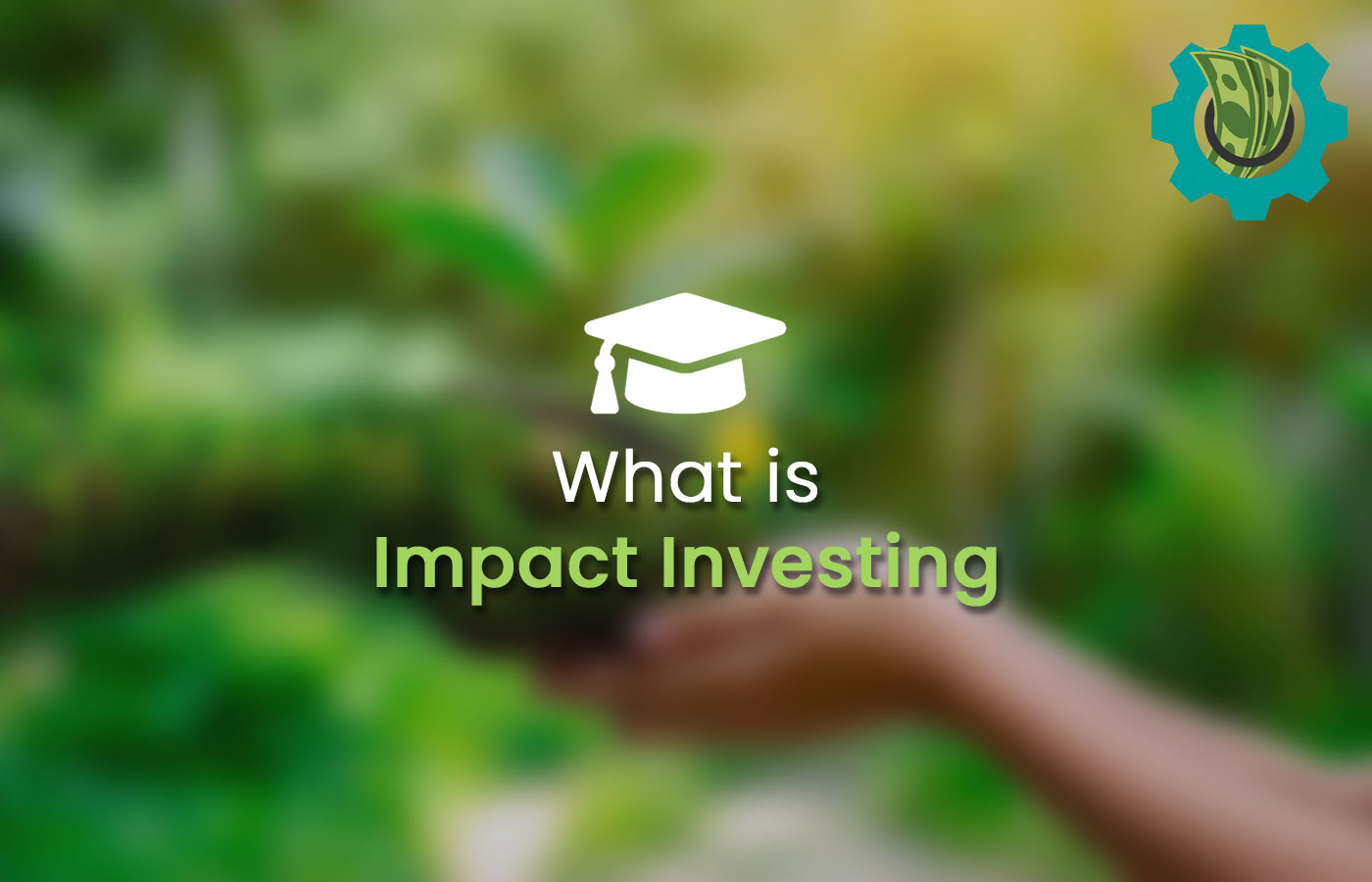[ad_1]
Impact investing is rapidly growing as more investors are becoming enthusiastic about investing in businesses that, in the long run, will have a meaningful and positive impact on the environment. Impact investing was first used in 2007 during an event to discuss a new global investment sector. Such investment was to tackle societal challenges to enhance effectiveness and bring solutions to such problems while also having financial returns for investors.
What is Impact Investing?
Impact investing is closely related to ESG investing. It simply means making investments for social benefit. It refers to responsible investment into businesses with sustainable development goals to generate measurable beneficial, social or environmental effects alongside a financial return.
The main objective of impact investing is for society’s ultimate good. Hence impact investors seek to provide solutions to pressing societal challenges efficiently and effectively. There are various sectors in which impact investing investors can put in their capital to work.
Some of the most common include:
Impact investment has innumerable benefits to both the investors and the environment. Beyond generating profits, shareholders also receive a huge dividend in the form of positive world change on the environment and global ecosystem.
The United Nations stated three guiding principles for impact investment:
- The expectation of a financial return.
- Intention to tackle societal challenges for positive change.
- Commitment to reporting against the intended social or environmental impact.
An individual seeking to become an impact investor should have the skills to understand societal issues, as well as the ability to analyse and measure the cause. That way, the right solution can be identified to generate long-term wealth.
How did impact investing start?
In modern times, investors have a multitude of options to choose from and ways of implementing their investment strategies. The term impact investing emerged around 2007. It was born out of a commitment to measuring social and environmental performance with the same rigour as financial performance.
The strategy majors on aligning investors’ beliefs and values with profitability to tackle social problems. It’s gained widespread popularity among those wanting to align their portfolios with making the world a better place. Hence impact investing portfolios are designed for positive social interest and other policies and practices that are environmentally friendly.
How has this investment strategy performed financially?
Impact investing allows investors to achieve financial returns according to their risks and return preferences. Just like traditional investing, this style requires a similar consideration of trade-off across risk and return while also focusing on social impact. The level of profit that is expected from this approach can vary widely, especially when it comes to funds.
Many investors worry that this type of investment process will yield little or no profit. And there is some evidence that suggests this pursuit can actually harm returns. However, there is also evidence to the contrary showing that it can be sustainable and profitable simultaneously.
According to Research and Market, amidst the height of the pandemic in 2020, the global impact investing market was estimated at $255bn. Yet looking at the current analyst consensus, this is projected to reach a revised value of $791.2bn by 2027. That’s an impressive compounded annual growth rate of 17.6%!
Here are strategies for successful Impact Investing
Being a successful impact investor requires a few skills for the investment decision making process:
- Intentionality – An investor’s intention to have a social or environmental impact through investment is critical.
- Empirical Data – There is a need to use evidence and data available to drive intelligent investment design that will be useful in contributing to social and environmental benefits.
- Manage Performance – This gives room for having feedback and communicating performance information to support others in the investment chain to merge towards impact.
- Experience – Investors with credible impact investing practices should share learning where possible to enable others to learn from their experience as to what is beneficial to society and the environment.
Is Impact Investing worth it?
Impact investing is still evolving. With the ever-increasing number of investors adopting this investment style, chances are it will continue to change over time. However, the core will fundamentally stay the same – finding ways to generate value in the world as well as in a portfolio.
In the end, impact investing has enabled investors to be able to avoid those areas that conflict with their values. And that alone makes it a worthwhile venture for many individuals.
A Monster Growth Opportunity?
Make no mistake: the Medical Technology Revolution is happening!
- Robotic surgery procedures have increased by more than 800% since 2014.
- Telehealth usage has stabilised at levels 38X higher than pre-pandemic levels.
- Augmented Reality is becoming more common in the operating room.
… and it’s barely gotten started.
In fact, experts are predicting a $630 Billion surge by 2030!
Quite simply, we believe it deserves your attention today.
So please don’t wait another moment.
Discover this massive investment opportunity before it’s too late!
Prosper Ambaka does not own shares in any of the companies mentioned. The Money Cog has no position in any of the companies mentioned. Views expressed on the companies and assets mentioned in this article are those of the writer and therefore may differ from the opinions of analysts in The Money Cog Premium services.
[ad_2]
Image and article originally from themoneycog.com. Read the original article here.

